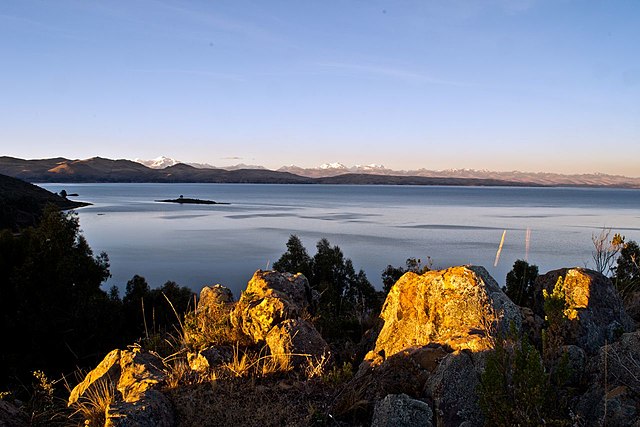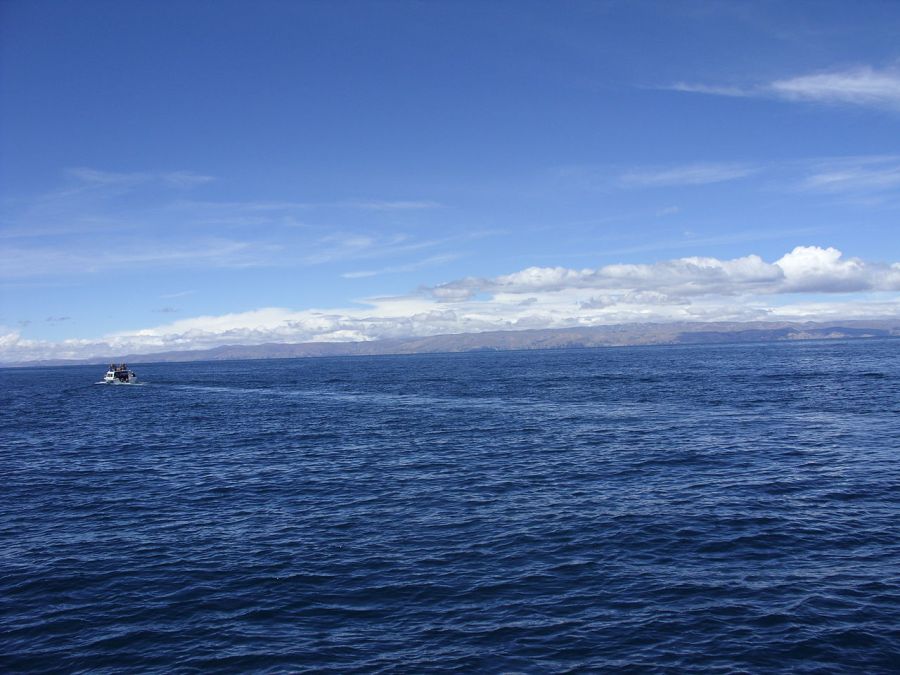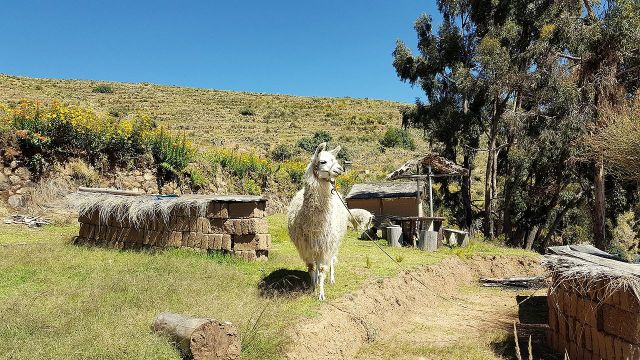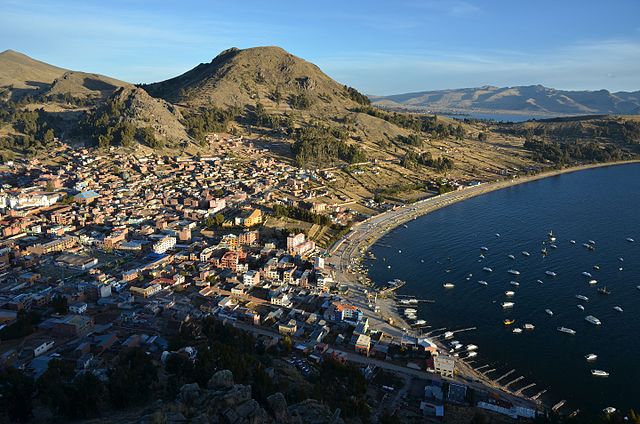Updated 10 July 2019
Puno to La Paz by bus takes about 8 hours depending on how long it takes to cross the border. There are different options to do this route, directly or via Copacabana. Read on to make the most of this route, and to find the best option for you.
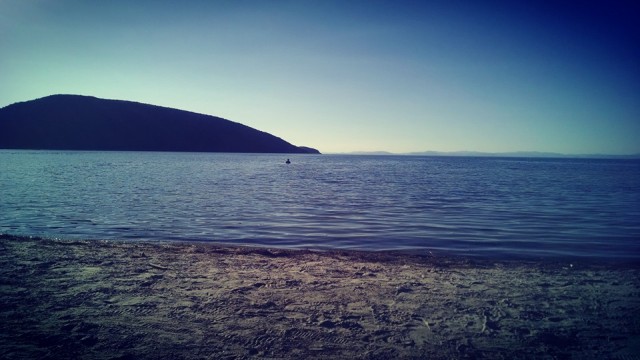
Puno is one of the highest city in Peru, at around 4,000 meters above sea level. It is on the shore of lake Titicaca, the highest navigable lake in the world on the skirts of the Andes mountain range. In Puno you can take a boat trip to the Uru’s floating islands, visit the Cathedral of Puno and visit other archaeological sites.

1. Puno to La Paz by bus
The bus terminal in Puno is located here (see map below). Before boarding the bus every passenger has to pay a terminal tax that has a cost of around 0.4 $us and is not included in the bus ticket. From this bus terminal you can travel to La Paz and other destinations in Bolivia and Peru.
Direct buses from Puno to La Paz go via the migration center near Desaguadero. Buses won’t stop in the town and the border crossing takes about 30 minutes to 1 hour depending on how many buses are ahead of you. The process is fairly straight forward. Get your passport stamped leaving Peru and stamp in again to enter Bolivia. US citizens and other nationalities requiring a visa should make sure to have all the necessary paperwork and documents available before traveling.
Schedule and prices for buses from Puno to La Paz
| Bus Company | Bus Class | Time of Departure | Time of Arrival | Price | Additional Information |
| Tour Peru | Semi lie-flat | 6:45 | 15:00 | US$ 15 | Direct service. Migration in Desaguadero. |
| Trans Titicaca | Normal | 7:00 | 15:00 | US$ 17.52 | Direct service. Migration in Desaguadero. |
| Trans Titicaca | Normal | 13:30 | 22:30 | US$ 20.44 | Via Kasani. Change of bus iun Copacabana. |
2. Puno to Copacabana by bus
The bus from Puno to Copacabana takes about 4 hours by bus. You will have to cross the border a the Kasani migration office.
Copacabana is a smaller and more relaxed town with many cultural and natural tourist attractions. Copacabana offers boat trips, hikes and the best trout in the region, as well as tours to the Islands of the Sun and Moon, where legend says the Inca Empire was founded. If you want to stop there on the way to La Paz, you can easily do so by taking one of the buses below:
Schedule and price for buses from Puno to Copacabana
| Bus Company | Bus Class | Time of Departure | Time of Arrival | Price | Additional Information |
| Trans Titicaca | Normal | 06:00 | 11:00 | US$ 10.22 | Direct service. Migration in Kasani. |
| Tour Peru | Normal | 07:00 | 12:00 | US$ 9.00 | Direct service. Migration in Kasani. |
| Huayruro Tours | Semi lie-flat | 07:00 | 12:00 | US$ 5.84 | Direct service. Migration in Kasani. |
| Huayruro Tours | Lie-flat | 07:00 | 12:00 | US$ 7.30 | Direct service. Migration in Kasani. |
| Transzela | Inca suite | 07:00 | 10:00 | US$ 15.00 | Direct service. Migration in Kasani. |
| Trans Titicaca | Normal | 07:30 | 12:30 | US$ 10.22 | Direct service. Migration in Kasani. |
| Trans Titicaca | Normal | 13:30 | 18:30 | US$ 13.14 | Direct service. Migration in Kasani. |
You will notice there are no night trips available. This is because the border closes at 20:00. Also please take into account that there is an hour time difference between Peru and Bolivia.

Please take into consideration that some buses make several short stops along the way, picking up passengers from local communities who make a living by selling food and beverages on the buses. Since these stops are not in the official itinerary, they may be upsetting for tourists.
There is no proper bus terminal in Copacabana, as it is a very small town, but buses stop at the main square near the bus companies’ offices. Here is the map:

If you are interested in spending a day or two in Copacabana before continuing your trip, one of the most popular things to do is visit the Island of the Sun (Isla del Sol). The boats leave from the dock at 8:30 and 13:30 most days. It takes about an hour and a half to reach Isla del Sol. On the island you will be able to see pre-Columbian ruins and experience the peace and energy of one of the most sacred places of the Inca empire. The boats back to Copacabana leave at 10:30 and 16:00, reaching Copacabana before 18:00.
3. Copacabana to La Paz
Copacabana to La Paz takes about 4 hours. The journey involves crossing the Tiquina strait which costs 2 bolivianos and is not usually included in your ticket. The buses will stop on the shore, passengers will have to cross the strait on boat while the boat crosses on a ferry. Passengers must then wait on the other side for their bus to finish crossing. They will then resume their journey. This takes about 30 minutes. Because it is not possible to cross the strait at night, the last bus to La Paz leaves at 18:30.
Schedule and price for buses from Copacabana to La Paz
| Bus Company | Bus Class | Time of Departure | Time of Arrival | Price | Additional information |
| Trans Titicaca | Normal | 13:30 | 17:30 | US$ 5.84 | Doesn’t include the crossing of Tiquina (2 Bs) |
| Vicuna Travel | Normal | 13:30 | 17:30 | US$ 4.38 | Doesn’t include the crossing of Tiquina (2 Bs) |
| Diana Tours | Normal | 13:30 | 17:30 | US$ 4.38 | Doesn’t include the crossing of Tiquina (2 Bs) |
| Turisbus | Tourist | 13:30 | 18:00 | US$ 19.00 | Includes the crossing of Tiquina. Programmed stops to take pictures and pick-up service. |
| Trans Titicaca | Normal | 18:30 | 22:30 | US$ 6.57 | Doesn’t include the crossing of Tiquina (2 Bs) |
If you want to plan ahead, remember to book your tickets through www.ticketsbolivia.com
Have a nice trip!

